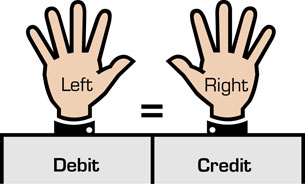Project 4
1. Project 4
1.14. Page 2
Training Room 4: The Opening Entry
What I Need to Know
There are different kinds of journals. In this training room, you will be instructed how to enter information into a general journal. A general journal is a two-column accounting form used to record financial events in chronological order and looks like this:

entry: each item entered into the journal
opening entry: the first entry made into a journal of a new business
source document: any piece of paper that provides details about a financial change in business (e.g., invoices, cheque stubs, cash  register tapes)
Each item entered into a journal is called an entry and the beginning is the opening entry. Because this balance sheet is the business paper that is being used for this entry, it is referred to as the source document.
Why Is This Important?
The general journal records all parts of a transaction in one place—what occurred, when it occurred, and why it occurred—so that it is clear to anyone reading the accounting records where money was spent or received. All entries must include the source of where this information was received. As previously mentioned, the source document for the opening entry is the beginning balance sheet. Other source documents could be cheque numbers or invoice numbers, for example. This will be explored more in FIN1020 when transactions are recorded for daily business activities.
Do you know which GAAP principle is in effect here? When you think you know, click on the GAAP icon to see if you were right.
![]()
5. The Principle of Objectivity
The Principle of Objectivity states that accounting will be recorded on the basis of objective evidence. Objective evidence means that different people looking at the evidence will arrive at the same values for the transaction. Simply put, this means that accounting entries will be based on fact and not on personal opinions or feelings.
The source document is the objective evidence.
What Do I Need to Do?
Recall the beginning balance sheet for Gurpreet’s Snow Removal from Training Room 1, which appears below.

Notice the equation at the bottom of the balance sheet above. Do you remember what that is called? Open The Accounting Equation if you want to review the equation described at the bottom of the balance sheet.
debit: left
credit: right
In accounting, the left side is called the debit side and the right side is called the credit side. Debits must always equal credits to be in balance. The short form of the word debit is DR or Dr., and the short form for the word Credit is CR or Cr.

double-entry accounting system: the total of the debit entries equals the total of the credit entries
The accounting equation must remain in balance.
This is referred to as the double-entry accounting system and provides a self-check while recording business transactions. This is important because, if you are not in balance, it is easy to know that an error has been made. Remember the weigh scale from Training Room 1? You don’t want the scale to tip. Therefore, both sides must be kept even at all times.
Recall that every item listed on the balance sheet is referred to as an account. Asset accounts are on the left side and therefore always have a debit balance. Liability accounts and the owner’s capital account are on the right side and therefore always have a credit balance.
Before you see how Gurpreet’s Snow Removal records this beginning balance sheet into the general journal, do you remember what this entry is called?¬†
![]()
It is called the opening entry.
Let’s have a look at Gurpreet’s Snow Removal’s general journal by opening the multimedia piece titled The Opening Entry.
Note that the Post Reference column remains blank here but will be used in the next training room when these entries are posted, or put into the ledger. Posting will be discussed in more detail in the next training room.